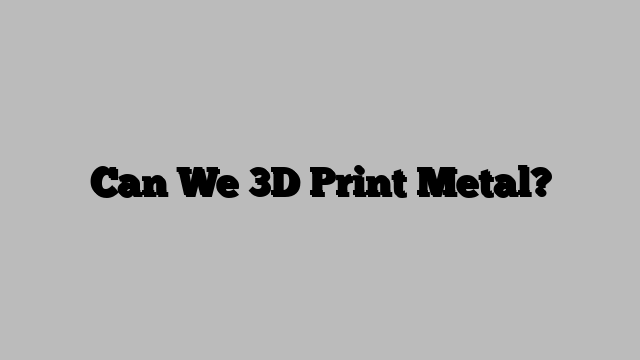3D printing, also known as additive manufacturing, has revolutionized the manufacturing industry by enabling the creation of complex and customized parts with ease. While 3D printing was originally limited to printing with plastics and other polymers, recent advances in technology have made it possible to print with metal as well. In this article, we’ll explore the question: can we 3D print metal?
The short answer is yes, we can 3D print metal. There are several methods of 3D printing metal, each with its own advantages and disadvantages. Let’s take a look at some of the most common methods.
Binder Jetting
Binder jetting is a 3D printing method that involves spreading a thin layer of metal powder on a build platform and then using a liquid binder to selectively bond the particles together. This process is repeated layer by layer until the final part is complete. Binder jetting is a relatively fast and inexpensive method of 3D printing metal, but the resulting parts may not be as strong as those produced using other methods.
Powder Bed Fusion
Powder bed fusion is a 3D printing method that involves melting metal powder layer by layer using a laser or electron beam. This process is repeated until the final part is complete. Powder bed fusion is a popular method for 3D printing metal because it produces high-quality, strong parts with good surface finish. However, it can be slow and expensive.
Directed Energy Deposition
Directed energy deposition is a 3D printing method that involves melting metal powder or wire as it is fed into a nozzle using a laser or electron beam. This process can be used to build up parts layer by layer or to add material to existing parts. Directed energy deposition is a fast and flexible method of 3D printing metal, but the resulting parts may not be as strong as those produced using powder bed fusion.
Metal Extrusion
Metal extrusion is a 3D printing method that involves feeding a metal wire through a heated nozzle, which melts the wire and extrudes it layer by layer to form a part. Metal extrusion is a relatively fast and inexpensive method of 3D printing metal, but the resulting parts may not be as strong as those produced using other methods.
We can 3D print metal using several different methods, each with its own advantages and disadvantages. Binder jetting, powder bed fusion, directed energy deposition, and metal extrusion are just a few of the methods available for 3D printing metal. The method you choose will depend on factors such as cost, speed, strength, and surface finish. With advances in technology, 3D printing metal has become more accessible and affordable than ever before, making it an increasingly popular option for manufacturing complex and customized metal parts.
